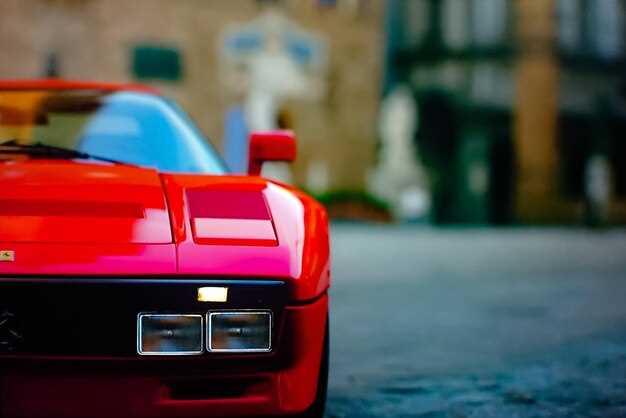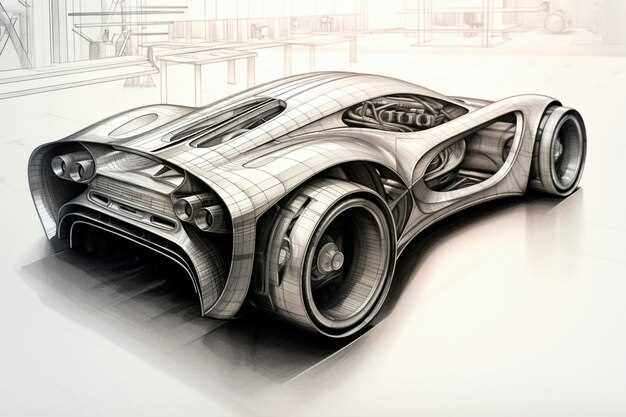
In the realm of automotive engineering, the interplay between classic designs and modern innovation serves as a foundation for the aesthetics and performance of today’s sports cars. The silhouettes, lines, and functional elements of iconic vehicles from past decades continue to inform the creative processes of contemporary designers. This fascinating relationship between history and modernity allows car manufacturers to honor their heritage while embracing advanced technology and design philosophies.
As the automotive industry evolves, the revival of classic design elements can be observed in numerous modern sports cars. The powerful forms that once captured the imagination of enthusiasts are reinterpreted with the latest materials and engineering techniques, bridging the gap between nostalgia and cutting-edge science. This approach not only pays homage to the timeless appeal of past masterpieces but also elevates the standards for performance and efficiency in today’s high-speed machines.
The influence of classic automotive designs extends beyond aesthetics; it encompasses a philosophy that balances form and function. Modern sports cars take cues from their predecessors, ensuring that while they may feature advanced technology, their roots remain deeply embedded in a rich history of design excellence. This connection fosters a unique narrative that resonates with both enthusiasts and casual drivers alike, creating vehicles that are not only powerful but also emblematic of a storied automotive lineage.
How Retro Aesthetics Shape Today’s Sports Car Market

In the contemporary automotive landscape, retro aesthetics have emerged as a significant influence on modern cars, particularly in the sports car segment. The allure of classic designs resonates with both enthusiasts and casual buyers, prompting manufacturers to incorporate nostalgic elements into their latest models. This trend reflects a desire for authenticity and a connection to the storied history of automobile racing and design.
Modern sports cars are increasingly adopting visual cues from classic models, such as iconic grilles, streamlined silhouettes, and distinctive body shapes. These features not only evoke a sense of nostalgia but also serve to differentiate new offerings in a competitive market. By blending vintage styling with contemporary technology, car manufacturers create a unique identity that appeals to consumers seeking both performance and heritage.
Additionally, the resurgence of retro-themed models can be attributed to a growing demographic that appreciates craftsmanship and timeless design. As young buyers enter the market, they are often motivated by emotional connections to vehicles that tell a story. This has led to a resurgence of limited-edition releases that pay homage to classic cars while integrating the latest advancements in performance and safety.
The integration of retro aesthetics also enhances the brand image, allowing manufacturers to leverage the rich history of their iconic models. By doing so, they cultivate a sense of loyalty among consumers who value tradition and innovation alike. As the automotive industry continues to evolve, the influence of classic designs will undoubtedly remain a driving force behind the evolution of modern sports cars.
Tech Integrations Inspired by Iconic Designs of the Past
The automotive industry has always drawn inspiration from its roots, and the influence of classic designs is evident in the technological advancements found in modern cars. These innovations are not merely aesthetic adaptations but rather functional improvements that enhance performance, safety, and driver experience.
One significant example is the integration of digital displays that mimic the analog gauges of classic vehicles. Many modern sports cars incorporate high-resolution screens that offer customizable information, resembling the nostalgic dials while providing real-time data crucial for performance tracking. This blend of vintage aesthetics with cutting-edge technology allows drivers to enjoy a classic look without sacrificing modern functionality.
Furthermore, the revival of classic automotive shapes, such as the sleek curves and bold lines of iconic sports cars, has inspired the aerodynamic designs of today’s vehicles. Manufacturers utilize advanced materials and computational fluid dynamics to refine car shapes, enhancing efficiency and stability at high speeds while paying homage to timeless designs.
Another area where classic influences are palpable is in sound engineering. The unmistakable roar of a vintage sports car has led developers to create artificial engine sounds in modern electric cars, ensuring an exhilarating driving experience that resonates with enthusiasts. This technology allows manufacturers to preserve the emotional connection drivers have with classic cars while embracing the eco-friendly future of mobility.
In conclusion, the fusion of classic design elements with modern technology not only pays tribute to the past but also pushes the boundaries of automotive innovation. By incorporating iconic features into today’s sports cars, manufacturers create a bridge between eras, ensuring that the spirit of classic vehicles continues to thrive in a modern context.
Balancing Nostalgia and Modern Performance in Sports Car Engineering

The automotive industry stands at a crossroads where classic designs meet the demands of modern performance. Iconic sports cars from decades past evoke a sense of nostalgia, drawing enthusiasts and collectors alike. These classic models, characterized by their unique aesthetics and driving experiences, have set the foundation for contemporary sports car engineering.
Modern engineers face the challenge of integrating the timeless design elements of classic cars with advanced technology and performance features. While sleek lines, retro-inspired styling, and distinctive shapes capture the essence of historic vehicles, today’s sports cars must also prioritize aerodynamics, lightweight materials, and powerful engines to meet the expectations of today’s drivers.
The reimagining of classic designs in sports cars necessitates a careful balance. For instance, manufacturers often incorporate modern performance technologies–such as turbocharging and hybrid drivetrains–while retaining the aesthetic cues that harken back to the golden age of automotive design. This synergy enhances the driving experience without sacrificing the character and charm that fans of classic cars cherish.
Additionally, the emotional connection that classic cars evoke plays a crucial role in automotive marketing. Brands leverage this nostalgia to enhance their current models, crafting a narrative that bridges past and present. By doing so, they not only honor their heritage but also attract a new generation of automotive enthusiasts who appreciate both the beauty of classic design and the thrill of contemporary performance.
Ultimately, the fusion of nostalgia and modern engineering serves as a testament to the enduring legacy of classic cars in the sports car segment. As manufacturers continue to innovate, the lines between past and present blur, creating vehicles that not only perform exceptionally but also resonate with the timeless allure of their predecessors.


